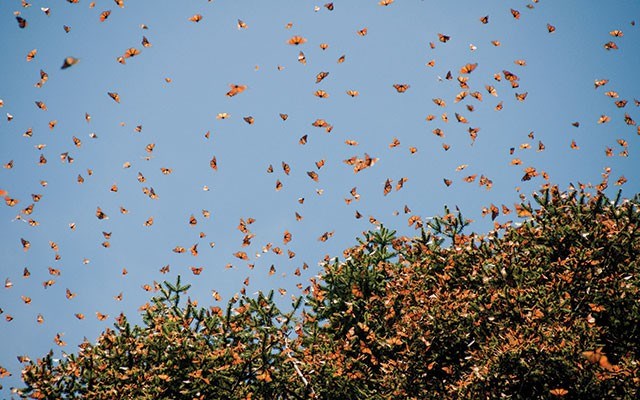Morelia, Mexico is the capital city of the state of Michoacán and the heart of this beautiful colonial city is a UNESCO world heritage site.
A 30-minute flight from Mexico City gets you to this well preserved, vibrant university city where you are surrounded by 16th and 17th century stone buildings, shops, narrow streets filled with restaurants, taco stands and amazing sidewalk cafes. It is very easy to spend the entire afternoon sitting at a sidewalk cafe close to the plaza and spectacular cathedral sipping the excellent coffee or "chocolate" watching life go by while being serenaded by an assortment of very talented, or at least enthusiastic, musicians.
The first building in the city was the San Franciscan Convent, which was established 10 years before the official founding of Morelia in 1541 by the Spanish. The magnificent cathedral took 100 years to build so it is a mixture of a variety of architectural styles.
This is a food lovers city with gourmet Mexican meals to be had for a very reasonable cost and plenty of good-quality accommodation in the centre of town.
With few tourists, this is also an excellent place to practice your Spanish language skills, or better yet, take some Spanish language classes. The Baden Powell Language Institute has excellent teachers and programs to fit most needs.
Morelia is not only a beautiful university city; it is also a great starting-off point for a trip to see the winter roosting grounds of the monarch butterfly.
"I know girls, let's go and see Canadian butterflies sleeping in Mexico!" I say to my two wonderful children who patiently ask me if that is a little bit like watching paint dry, but agree to the experience hoping for adventure. And it is an adventure when the unexpected happens — like the amazing tortilla stand in the middle of nowhere our driver stops at for beans and rice, or the fact the kids think they saw Jabba the Hutt drinking a beer at a cafe in Morelia, and everything they learned about Switzerland from the Swiss girl who shared the minivan and driver with us.
It's the experiences we learn "between the pages" that we didn't plan for that make our trip even more valuable.
Every fall millions of monarch butterflies from as far north as the Great Lakes region of Canada travel up to 5,000 kilometres to their winter-roosting sites in a small forest in central Mexico, often to the same trees where their great-grandparents roosted. They do not eat all winter but cluster together on branches and tree trunks until winter is over. Then as the days warm in March they take flight, mate and start to head north to find milkweed plants to lay their eggs on before they die. It's up to the next generation of butterflies to emerge and continue to travel north.
This migration remains one of the great mysteries of the animal world, as it is still unclear how the butterflies know to return to this very small, protected area in Mexico. It is only every fourth generation that migrates when the days get shorter and cooler in Canada.
Visiting El Rosario Monarch Butterfly Reserve from Morelia is possible thanks to a number of small companies that will drive you on the three-hour trip through varied countryside up into the mountains. Tours can be arranged through most hotels and the drive itself is a great way to see this area of Mexico since you travel through small towns and get glimpses of everyday life.
Your driver will take you through the old mining town of Angangueo, which was once one of the richest gold mines in the Americas until the minerals were depleted and it closed in the 1960s, though some independent miners continue to work in the tunnels today.
The forest that contains the reserve is owned by 65 to 75 local Mexican families who manage and protect the area from illegal logging, as this area of Mexico has been greatly deforested.
For five months of the year these families can afford to live in their villages from the proceeds of the reserve while the remainder of the year many of them travel and work mainly as itinerant loggers.
Your transport will take you to the entrance to the reserve where you pay a nominal fee to access the area and begin a 40-minute walk up to 3,600 metres along a well-trodden path to see this miracle of nature.
If you are lucky enough to arrive on a sunny day before mid March you will be surrounded by cloud of orange flying butterflies and in the quiet can hear the movement of their wings.
No matter what the weather this experience should not be missed.
The winter of 2015-2016 has shown an increase in overwintering monarchs in the butterfly reserve though in the last 20 years the population of monarch butterflies east of the Rockies has fallen by more then 90 per cent due to herbicide use that has destroyed the milkweed they need to survive, and deforestation of their overwintering grounds.
For more information on the monarch butterflies visit: http://www.monarchwatch.org.




